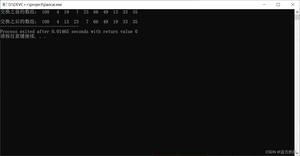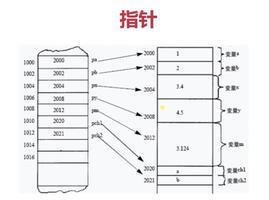NumPy:向量化为另一个数组中的每个元素在数组中找到最接近的值
回答:
known_array:numpy数组; 仅由标量值组成;shape: (m, 1)
test_array:numpy数组; 仅由标量值组成;shape: (n, 1)
回答:
indices:numpy数组; shape: (n, 1); 对于in
test_array中的每个值,查找in中最接近的值的索引known_array
residual:numpy数组; shape: (n, 1); 对于in
test_array中的每个值,查找与in中最接近的值的差known_array
回答:
In [17]: known_array = np.array([random.randint(-30,30) for i in range(5)])In [18]: known_array
Out[18]: array([-24, -18, -13, -30, 29])
In [19]: test_array = np.array([random.randint(-10,10) for i in range(10)])
In [20]: test_array
Out[20]: array([-6, 4, -6, 4, 8, -4, 8, -6, 2, 8])
回答:
def find_nearest(known_array, value): idx = (np.abs(known_array - value)).argmin()
diff = known_array[idx] - value
return [idx, -diff]
In [22]: indices = np.zeros(len(test_array))
In [23]: residual = np.zeros(len(test_array))
In [24]: for i in range(len(test_array)):
....: [indices[i], residual[i]] = find_nearest(known_array, test_array[i])
....:
In [25]: indices
Out[25]: array([ 2., 2., 2., 2., 2., 2., 2., 2., 2., 2.])
In [26]: residual
Out[26]: array([ 7., 17., 7., 17., 21., 9., 21., 7., 15., 21.])
加快此任务的最佳方法是什么?Cython是一个选项,但是,我始终希望能够删除for循环并让代码保留为纯NumPy。
回答:
我做了一些小的基准测试来比较非矢量化和矢量化解决方案(可接受的答案)。
In [48]: [indices1, residual1] = find_nearest_vectorized(known_array, test_array)In [53]: [indices2, residual2] = find_nearest_non_vectorized(known_array, test_array)
In [54]: indices1==indices2
Out[54]: array([ True, True, True, True, True, True, True, True, True, True], dtype=bool)
In [55]: residual1==residual2
Out[55]: array([ True, True, True, True, True, True, True, True, True, True], dtype=bool)
In [56]: %timeit [indices2, residual2] = find_nearest_non_vectorized(known_array, test_array)
10000 loops, best of 3: 173 µs per loop
In [57]: %timeit [indices1, residual1] = find_nearest_vectorized(known_array, test_array)
100000 loops, best of 3: 16.8 µs per loop
加速约 !
回答:
known_array 未排序。
我按照下面@cyborg的答案运行了基准测试。
:如果known_array已排序
known_array = np.arange(0,1000)test_array = np.random.randint(0, 100, 10000)
print('Speedups:')
base_time = time_f('base')
for func_name in ['diffs', 'searchsorted1', 'searchsorted2']:
print func_name + ' is x%.1f faster than base.' % (base_time / time_f(func_name))
assert np.allclose(base(known_array, test_array), eval(func_name+'(known_array, test_array)'))
Speedups:diffs is x0.4 faster than base.
searchsorted1 is x81.3 faster than base.
searchsorted2 is x107.6 faster than base.
首先,对于大型数组,diffs方法实际上要慢一些,它还会占用大量RAM,而当我在实际数据上运行它时,系统就会挂起。
:何时known_array未排序;代表实际情况
known_array = np.random.randint(0,100,100)test_array = np.random.randint(0, 100, 100)
Speedups:diffs is x8.9 faster than base.
AssertionError Traceback (most recent call last)
<ipython-input-26-3170078c217a> in <module>()
5 for func_name in ['diffs', 'searchsorted1', 'searchsorted2']:
6 print func_name + ' is x%.1f faster than base.' % (base_time / time_f(func_name))
----> 7 assert np.allclose(base(known_array, test_array), eval(func_name+'(known_array, test_array)'))
AssertionError:
searchsorted1 is x14.8 faster than base.
我还必须评论说,该方法还应该具有存储效率。否则我的8 GB RAM不足。在基本情况下,这很容易满足。
回答:
例如,您可以计算使用中的所有差异:
differences = (test_array.reshape(1,-1) - known_array.reshape(-1,1))以及使用argmin和花式索引以及np.diagonal获得所需的索引和差异:
indices = np.abs(differences).argmin(axis=0)residual = np.diagonal(differences[indices,])
因此对于
>>> known_array = np.array([-24, -18, -13, -30, 29])>>> test_array = np.array([-6, 4, -6, 4, 8, -4, 8, -6, 2, 8])
一送一
>>> indicesarray([2, 2, 2, 2, 2, 2, 2, 2, 2, 2])
>>> residual
array([ 7, 17, 7, 17, 21, 9, 21, 7, 15, 21])
以上是 NumPy:向量化为另一个数组中的每个元素在数组中找到最接近的值 的全部内容, 来源链接: utcz.com/qa/412159.html







